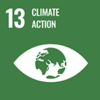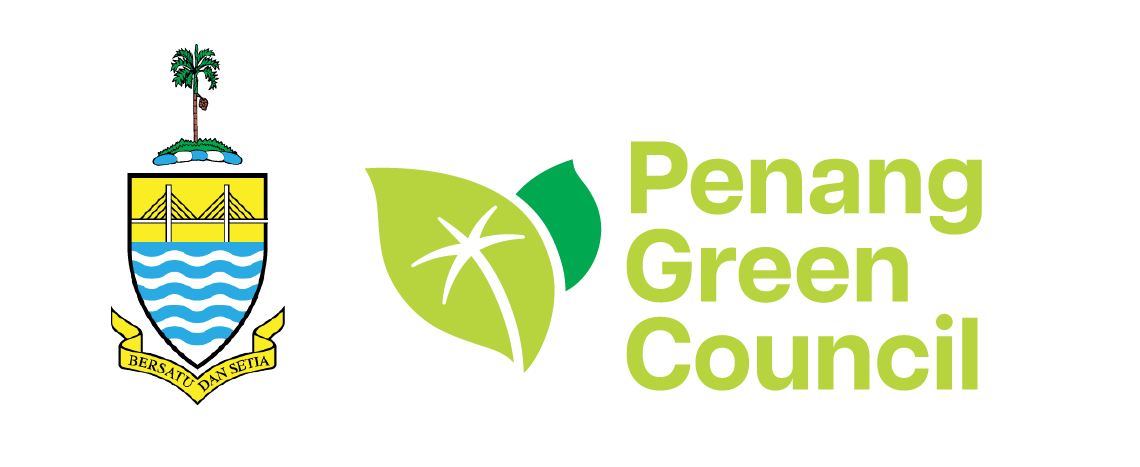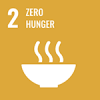Penang Green Data
OBJECTIVES
To formulate the new Penang sustainability indicators from the United Nations Sustainable Development Goals and
become a reference to all key stakeholders
To become a foundation for developing the Penang Green Agenda in achieving the sustainability
Description
This goal ensures that Penangites have access to safe, nutritious and sufficient food all year round. Penang has rice yield of 5.7 tonnes/ha, to increase rice production and for self-sufficiency in the midst of climate change, sustainable food production systems and resilient agricultural practices must be adopted.
List of Indicators
- Agriculture lands for crops (Hectares), Penang 2010 – 2017
- Number of farmers, Penang 2010-2017
- Agriculture Production (‘000 metric tonnes), Penang 2010 – 2017
- Total number of livestock population by type, Penang 2010 – 2017
- Agriculture GDP by type of economic activity at constant price 2010 (RM million), Penang 2010 – 2017
- Gross Domestic Product By Type of Economic Activity, Penang 2010-2017
- Fish Landed by Type, Penang 2010 – 2017
- Aquaculture Statistic , Penang 2010 – 2017
- Total collected weightage of MBSP food waste for the year 2017 & 2018, kg
- Kajian komposisi sisa untuk Laporan Detailed Environmental Impact Assesment (DEIA) 2016
- Livestock Production and Value, Penang 2010 – 2017

Description
It is forecasted that at least one in four people will be troubled by water shortages in 2050. Mitigating water shortages becomes increasingly important especially in Penang where water resource mostly depends on Sungai Muda. Mitigation also means protecting water source ecosystem such as forests and rivers as well as investing on water efficiency and treatment technologies.
List of Indicators
- Water Consumption & Production Rate (cubic meters, ‘000 cu.m), Penang 2010 – 2019
- Average Daily Water Consumption & Production Rate (cubic meters, cu.m), Penang 2010 – 2019
- Total Registered Consumers, Penang 2010-2019
- Number of treatment plants, Penang 2010-2019
- Average water quality (river), Penang 2010-2017
- Proportion of water samples treated for good water quality, Penang 2010 – 2019
- Number of dams in Penang,2010 – 2018
- Total raw water storage capacity (million litre),2010 – 2019
- Water treatment plants design capacity, Penang 2010 – 2019
- Supply of raw water from storage dams in Penang, 2010 – 2018 in million litres per day (MLD)
- Water Quality Status of Clean River, Penang 2010 – 2017
- Dam capacity (Last updated – 28/03/2022)
- Penang Water Supply Infrastructure
- Penang Monthly rainfall (mm) at 3 Dams, 2010 – 2020 (as of Aug 2020)
Description
Greenhouse gas emissions from the burning of fossil fuel have dire impacts on our climate and environment. Energy generation in Penang still depends on fossil fuels. Clean energy sources need to be expanded and upgraded to ensure Penangites have access to affordable clean energy.
List of Indicators
- Power Demand, Supply and Excess rate, Penang 2010 – 2019
- The annual energy generation for RE projects, Penang 2012 – 2018
- Cumulative CO2 emission reduction, Penang 2012 – 2018
- Number of individual with solar PV access, Penang 2013 – 2017
- Individual Solar Photovoltaic (PV) Usage (MW), Penang 2012 – 2016
- Electrical supply interruptions, Penang 2013 – 2017
- Electricity consumption (GWh) by state in Peninsular Malaysia, 2010 – 2017
- Household energy consumption pattern, Penang 2009
- Energy consumption by household electrical appliances
- Electricity usage and rate per hour of household electrical appliances

Description
Population in Penang is projected to reach 1.98 million people in 2030. To accommodate the rising population on a limited land, we need to transform the way we manage our urban spaces. This means that Penangites need to have access to safe and affordable housing, better public transport system, more public spaces, and improved urban planning, to name a few.
List of Indicators
- Land area distribution (km2), Penang 2010 – 2018
- Estimated population number (‘000), Penang 2010 – 2019
- Crude Birth and Death Rate, Penang 2010 – 2017
- Waste Disposed at Landfill and Recycling at Pulau Burung, Penang 2010 – 2019
- Total waste generation and recycling rate, Penang 2010-2019
- Managed scheduled waste, Penang
- Incidence Rate of water, food and vector borne diseases, Penang 2010-2018
- Number of motor vehicle by type, Penang 2012-2018
- Number of passenger-load handled at Penang International Airport, Penang 2010-2018
- Number of Green Building Index (GBI) certified projects, Penang 2013-2021
- Total land use, Penang
- Number of participating schools in Penang Green School programme
- Number of Newly Certified Offices under Penang Green Office certification programme
- Average Daily Traffic (ADT), Penang 2010-2020
- Total Death Caused By Road Accidents, Penang 2010-2021

Description
Manufacturing industry contributes 50% towards Penang’s GDP. In line with Penang’s aspiration of becoming a green state, we need to change the way we produce and consume goods and services to minimize our ecological footprint. We need to efficiently manage our natural resources, waste and pollutants as well as moving towards more sustainable patterns of consumption.
List of Indicators
- Gross Domestic Product, Penang 2010 – 2020
- Total land use (ha), Penang
- Gross Domestic Product By Type of Economic Activity (in 2015-constant price), Penang 2010-2019 -RM Million
- Crops Area (hectares), Penang
- Agriculture Production (‘000 metric tonnes), Penang 2010 – 2017
- Projection of agricultural production (‘000 metric tonnes), Penang 2010 – 2020
- Power Demand, Supply and Excess rate, Penang 2010 – 2019
- Water Consumption & Production Rate (cubic meters, ‘000 cu.m), Penang 2010 – 2019

Description:
Drastic effects of climate change are affecting every country in the world. The worst flood in Penang on November 2017 was a wake-up call to Penang in order to take action to mitigate climate-related disasters and address disaster risk management. Urgent action is needed to combat climate change and to reduce its impact before the effects aggravate.
List of Indicators
- Average water quality (river), Penang 2010-2017
- Mean temperature, rainfall and mean relative humidity, Malaysia, 2010-2018
- Statisitk Laporan Tabung TYT Negeri Pulau Pinang Bagi Tahun 2011 – 2021
- Number of flood incident by state, Malaysia,2014 – 2017
- Monthly average concentration of Particulate Matter (PM10) in the air, Penang,2010 – 2018
- Monthly minimum and maximum Air Pollutant Index (API), Penang (January – June) (2010 – 2018)
- Air quality status, Penang 2010-2019
- Types of pollution reported (total number), Penang 2010 – 2019
- Number of oil spill incidents at sea, Malaysia, 2014-2018
- Number of fire incidents by states, Malaysia, 2014-2018
- Penang Monthly rainfall (mm) at 3 Dams, 2010 – 2020 (as of Aug 2020)

Description
Surrounded by water all around, either on island or on mainland Penang, we are blessed with great diversity of marine life, including fishes and seafood for consumption. Protecting our marine and coastal ecosystem will also protect our food. Pollution from land into the sea, fish stock overexploitation, and ecosystem degradation are few bits of the big picture we need to focus on.
List of Indicators
- Fish Landing, Penang 2010-2018
- Number of licensed fishing vessels, Penang 2010 – 2020
- Number of fishermen working on licensed fishing vessels, Penang 2010 – 2020
- Total coastal length , Penang, 2017 – 2018
- Status of marine water quality at coastal areas based on Marine Water Quality Index, Malaysia, 2015-2017
- Status of marine water quality at estuary areas based on Marine Water Quality Index, Malaysia, 2015-2017
- Status of marine water quality at island areas based on Marine Water Quality Index, Malaysia, 2015-2017

Description
In the small size and urbanisation of Penang Island, a new species of scorpion was recently discovered in 2017 at the iconic Penang Hill. Forests are vital habitats for a huge range of wildlife and are also crucial for clean, fresh air as well as water. Preserving and restoring terrestrial ecosystems, halting deforestation and land degradation are important to reduce the loss of our precious natural heritage. Thus, it is all in our hand to protect it for us to live or to destroy it for us to die.
List of indicators
- Forested and Non-Forested Area, Penang 2010-2020
- Permanent Reserved Forest (HSK), State land and Wildlife reserve, Penang 2010 – 2020
- Area of Permanent Reserved Forest by Forest Types, Penang 2010-2018
- Total of tourist arrival at Penang National Park as an ecotourism site, Penang 2010-2017
For further details, please contact us at 04-250 3322 or email to info@pgc.com.my



